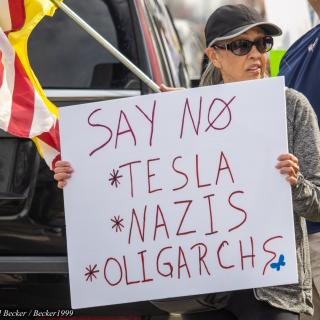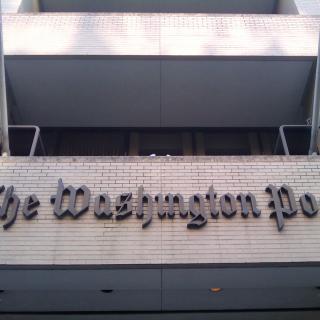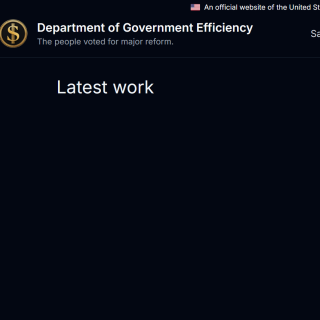October has beennamed “Breast Cancer Awareness Month.” In its honor and for breast cancer patients …
Who started Breast Cancer Awareness Month?
According to the National Breast Cancer Foundation, “October is Breast Cancer Awareness Month, which is an annual campaign to increase awareness of the disease.” It was founded in 1985 collaboratively between the American Cancer Society and what is now AstraZeneca, which develops and markets cancer drugs.
Why the pink ribbons?
Originally, a protest against the lack of funding for cancer prevention. The ribbons originated in 1993 from “… 68-year-old Charlotte Haley, the granddaughter, sister, and mother of women who had battled breast cancer. Her peach-colored loops were handmade in her dining room. Each set of five came with a card saying: ‘The National Cancer Institute annual budget is $1.8 billion, only 5 percent goes for cancer prevention. Help us wake up our legislators and America by wearing this ribbon.’” The Breast Cancer Research Foundation and the Susan G. Komen Foundation, a major funder of clinical trials, started their own ribbon campaigns several years later.
What is breast cancer?
Per the National Cancer Institute. Cancer is, “a disease in which some of the body’s cells grow uncontrollably and spread to other parts of the body.” Breast cancer develops from breast tissue.
How does breast cancer develop?
Cancer occurs at the cellular level. Cells grow, multiply and create new cells when needed; new ones replace old, dead ones. When the process breaks down, cells can become cancerous and multiply uncontrollably, sometimes forming lumps of tissue called tumors.
What is metastasis?
Cancerous tumors may spread into adjacent or even distant tissues to form new tumors. In so doing, they have metastasized and can be deemed malignant. The location where the tumors first formed is termed the “primary cancer.” Even when cancer cells travel by the lymph or blood systems to another area of the body, the metastatic tumor will be the same as the primary tumor.
How is breast cancer detected?
Lumps will sometimes show up on mammograms or may be felt by hand. Changes in nipple size and shape could also be a sign. If cancer is suspected, ultrasounds, MRIs or biopsies may be performed.
What are the stages and types of breast cancer?
Stages: 0 (non-invasive, in situ); I (spread to nearby tissue and lymph nodes); II (grown and spread); III(not spread to other organs, but advanced); IV(metastatic to other organs).
Cell grades: 1 (cells slow growing), 2 (cells dividing faster than normal) and 3 (cells grow quickly, some making new cancer cells).
Cell hormone status: Cancer cells have estrogen receptors (ER+) or progesterone receptors (PR+) to promote their growth. OR, the cells can have no receptors (HR-).
HER2 Status: (human epidermal growth factor receptor 2) gene whose signaling can produce too much growth promoting protein.
Note:Negative statuses for the two hormones and HER2 is known as “Triple Negative Breast Cancer.”
How prevalent is breast cancer?(From Cancer.net)
“This year, an estimated 281,550 women in the United States will be diagnosed with invasive breast cancer, and 49,290 women will be diagnosed with non-invasive (in situ) breast cancer. From 2008 to 2017, invasive breast cancer in women increased by half a percent each year.” … “It is estimated that 44,130 deaths (43,600 women and 530 men) from breast cancer will occur this year.”
How is breast cancer treated?
By several approaches depending on the type of cancer and how far or if it has spread. “Local Treatments” involve surgery to remove the tumor. Radiation therapy specifically targets and kills cancer cells using high-energy beams. “Systemic treatments” include chemotherapy (aka chemo), hormonal therapy, immunotherapy and targeted therapy Each depends on the cancer type. For example, if the cancer is HR- (HR Negative for hormone receptors), then hormone-based therapies are useless and other options must be considered. Chemo can also be administered as adjuvant (given after primary therapy such as surgery to reduce chance of recurrence) or neoadjuvant (given before primary surgery to reduce tumor size).
How do systemic breast cancer treatment drugs work?
Over 100 agents are defined as cancer chemotherapy drugs. The type given depends on the stage of the cancer and cancer type. The drugs’ modes of action comprise targeting all rapidly dividing cells including normal ones, damaging cancer cells’ DNA or blocking the chemicals those cells need to divide. Detailed drug information is available on DrugBank.
What drugs treat breast cancer?
Alkylating agents:damage DNA of cancer cells(cyclophosphamide, cisplatin, carboplatin); antimetabolites: interfere with cell replication (5-fluorouracil or 5-FU); anthracyclines: interfere with DNA metabolism (doxorubicin, daunorubicin); mitotic inhibitors: inhibit cell division(docetaxel, paclitaxel); immunotherapy: activates immune system (monoclonal antibodies -trastuzumab), checkpoint inhibitors – pembrolizumab); target therapies: act on specific molecular targets (aromatase inhibitor - letrozole). Note that these drugs have single letter abbreviations that, when combined with those of other drugs, form acronyms to represent multi-drug regimens given more or less simultaneously. A list of them can be found here. Most anticancer agents are administered by intravenous infusion; some, like letrozole, are oral tablets.
Are breast cancer drugs expensive?
They can be. Newer drugs like pembrolizumab (check point inhibitor, Ketruda) or trastuzumab (monoclonal antibody Herceptin) can cost $150,000 and $50,000 per year respectively. Because they are “off patent,” older drugs like doxorubicin (~$1,066/mo.), cisplatin (~ $445/mo.) and letrozole (~$260/mo.) will be cheaper. Chemotherapy costs will also include physician fees, drug administration fees and facility fees.
Who markets breast cancer drugs?
It should first be understood that cancer is a for-profit industry. While corporations marketing cancer drugs attempt to show empathy, their ultimate goal is to increase shareholder value or owner wealth. The top 20 oncology companies by total products are here. All are billion-dollar multinational corporations; individual product sales also number in the billions. Merck & Co.’s blockbuster Keytruda (pembrolizumab) garnered $14.4 billion in 2020 revenue. Herceptin’s (trastuzumab) 2019 annual sales exceeded $6 billion. Even older drugs like doxorubicin ($810 million), cyclophosphamide ($630 million) and methotrexate ($489 million) maintain significant annual sales. Breast cancer treatment is a $21+ billion dollar global industry.
What are the side effects of breast cancer drugs?
Dire, debilitating and sometimes deadly. Each of the above drugs is linked to its package insert, approved by the FDA. Specifically look for “black box warnings,” literally – warnings inside black outlined boxes. Also look for “Warnings and Precautions” or “Adverse Reactions.” In addition, side effects can be teased-out from the drug’s clinical trial data sometimes listed in the insert.
Can breast cancer drugs kill?
Yes, black box warnings display the most dire and deadly side effects. These include anaphylaxis (allergy), cardiomyopathy (heart), hepatotoxicity (liver), nephrotoxicity (kidney), neutropenia (immunity) and neuropathy (nerve), among many others. Pneumonia, “chemo brain,” and even new malignancies are possible. According to a 2015 study, chemo is “not associated with patient survival” toward the end of life. This statement from the study’s author is telling, “… people who were feeling the best at the start of the therapy ended up feeling the worst. They are the ones most harmed and who had the most to lose.” As for immunotherapy drugs, consider this article and its graphs that depict response rates: “Few people actually benefit from ‘breakthrough’ cancer immunotherapy.”
How long is breast cancer survival?
That’s debatable. Survival is measured in terms of “overall survival” and “progression free survival”. This 2015 study takes a look at rates of breast cancer mortality, which is said to have declined from 1975 to 2010. However, analysis shows that this drop did not result from prevention or screening programs. Instead, improvement correlated with the introduction of chemotherapy agents in the 1970s (compared to no such treatments before that), stage shifts due to overdiagnosis (“playing with numbers”) and the emergence of hormonal therapies like Tamoxifen. This study contains excellent graphs that outline various survival rates over a 30+ year timeframe.
Can cannabis help with breast cancer?
Yes, in several ways. First, it can help control chemotherapy side effects like nausea and vomiting, peripheral neuropathy (pain) and cachexia (inability to eat). This makes sense considering the human endocannabinoid system that regulates those functions and runs on compounds called endocannabinoids similar those in cannabis. In 1988, the plant in its natural form was ruled as "one of the safest therapeutically active substances known to man.” Further, research from 1975 documented the antineoplastic properties of THC. Recently, a human clinical trial began in Great Britain to determine if Sativex (a proprietary THC+ oil), along with temozolomide, kills Glioblastoma (brain) cancer cells. A recent survey of over 600 breast cancer patients found, “Seventy-nine percent of people reported using [cannabis] during active treatment like chemotherapy, targeted therapy, hormonal therapy and radiation.”
What is RSO?
Rick Simpson Oil (RSO) originates from a Canadian man who used highly concentrated THC oil to heal skin cancer. It worked and he published his results. He never patented his product, nor trademarked the term. Still, RSO defines highly concentrated oils of various THC ratios consumed orally. Lab studies have shown that the oil can stop tumor growth and keep cancer cells from spreading. Testimonials about cannabis oil ameliorating cancer have come from actress Olivia Newton John, singer Melissa Etheridge, stuntman Mark Chavarria, dispensary owner Christina Visco, and cannabis activist Michelle Aldrich, among others.
Why so little research?
“… clinical trials in oncology have the highest failure rate compared with other therapeutic areas.” A stunning statement, considering the toll taken by taken by cancer. Add to that, as this 2020 study on the use of cannabinoids in cancer reports, “… there are no clinical trials evaluating the effect of cannabinoids on BC [breast cancer] treatment outcomes and/or prognosis,” even with RSO. Cannabis’ restrictive federal Schedule I status coupled with anti-marijuana laws enacted over 50 years of the War on Drugs has stifled cannabinoid research in the United States. Investigators must leap through a myriad of proverbial hoops to conduct scientific enquiry as outlined in this 2017 study. Just this decade, however, research into marijuana’s molecular effects, antitumor activity, pediatric uses, and new cannabinoids has gained scientific notice.
What does the future hold?
Are we making headway toward “curing” breast cancer? Most people would answer no. Fifty years ago, during the same time frame that former President Richard Nixon signed the Controlled Substances Act (CSA - 1970) and declared “War on Drugs” (1971), he also proclaimed “War on Cancer” (1971). Arguably, none worked. Over the last 50 years, the overall age-adjusted mortality for cancer has remained mostly flat. Promising cures have become little more than rosy hype. Many run contrary to the ancient physician adage, “First do no harm.” The CSA blocked promising options like cannabis, while the drug war demonized those options, scaring the public. Five decades later, large numbers of patients still suffer and die, while the industry designed to serve them grows even corpulent, deceptive and detached. How can we find our way out?
Activism and Advocacy.The same kind of demanding work that brought legal marijuana to 36 states. Concerned citizens must practice the tools and tactics of activism and advocacy to motivate change: communicate with legislators, hold demonstrations, stage events, engage the media, conduct oppo research and write articles like this one. Top priorities should be removing cannabis from federal scheduling, tapping funding sources to finance clinical trials and educating medical and scientific communities on the benefits of alternatives to conventional cancer treatments.
As to those pink ribbon campaigns and pandering policy makers so prominent during Breast Cancer Awareness Month, ask them one simple question: If cannabis could cure cancer, would you run for it?
What are the qualifications of Mary Jane’s Guide to write about cancer and cannabis?
· MBA in Finance. Taught statistical and information analysis.
· Nine years with Big Pharma.Analyzed and reported to management information about cancer chemotherapy drugs and their global marketplace.
· Project Manager on a database of 30,000 cancer patients and the anticancer agents they were taking.
· Medical Cannabis Activist.Prominent Ohio advocate of 20+ years who helped pass Ohio’s law.
· Cancer patient.Triple negative, Grade 3. Lumpectomy, radiation and RSO. You can read Mary Jane’s story here.
This article can be found in sharable PDF format here.
-=-=-=-=-=-=-
Mary Jane Borden is an author, artist, activist and cannabis advocate from Westerville, Ohio. During her 40-year career in drug policy, she co-founded seven cannabis-oriented groups, co-authored four proposed constitutional amendments, lobbied for six medical marijuana bills, penned 50+ Columbus Free Press articles and has given hundreds of media interviews. Her artwork can be viewed at CannabinArt.com and she can be reached at maryjaneborden@ gmail.com.



